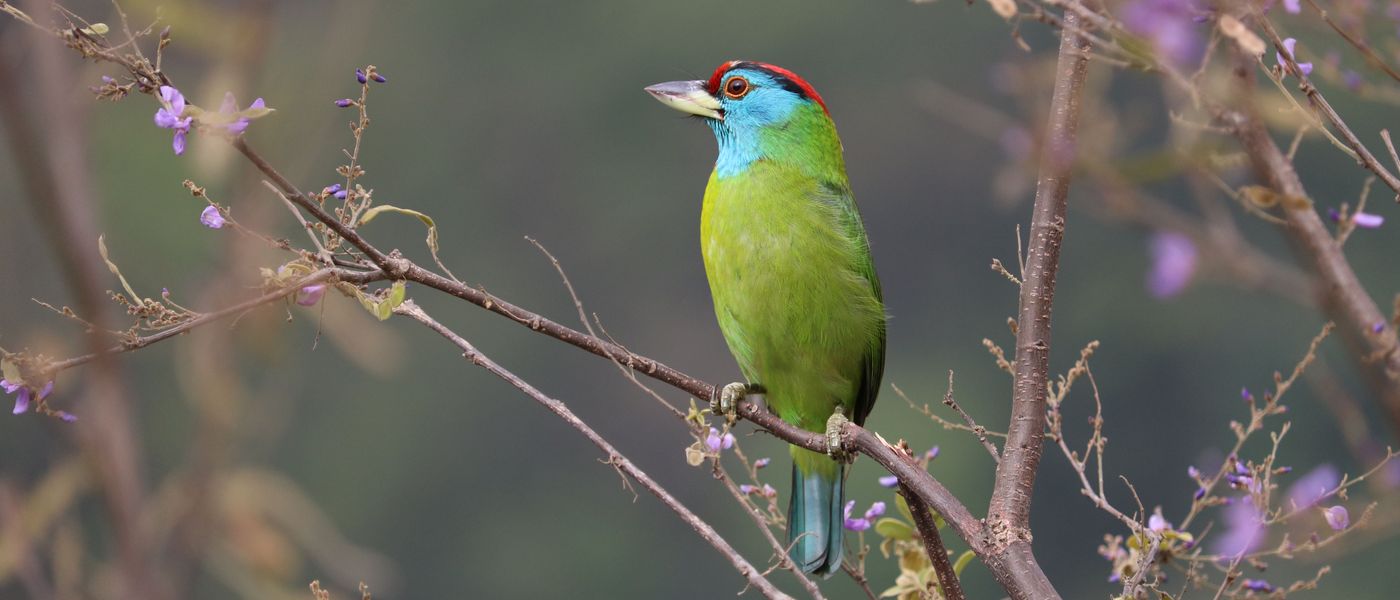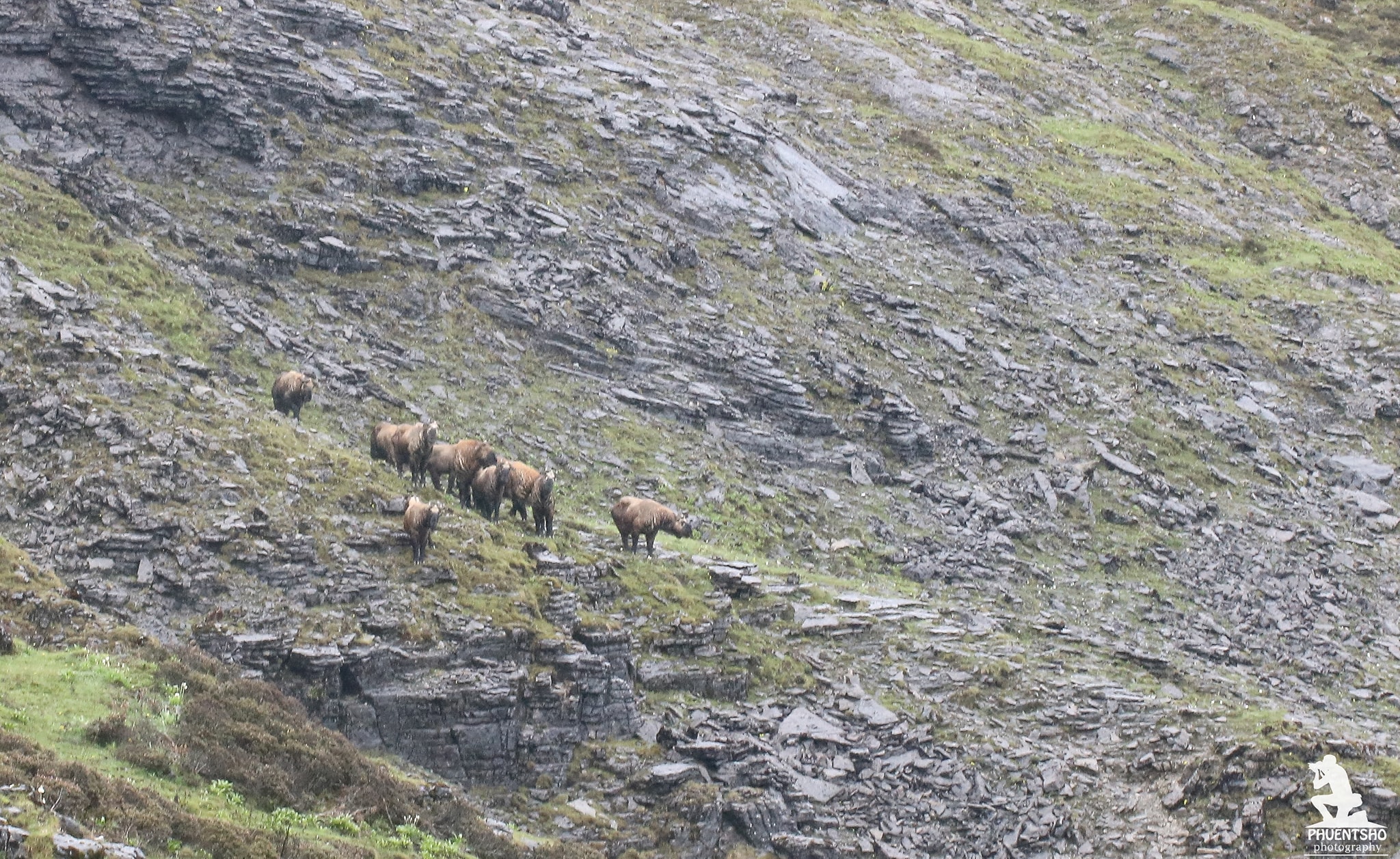
Overview
Common name: Blue Poppy
Local name: ཚེར་སྔོན་མེ་ཏོག
Scientific name: Meconopsis gakyidiana T. Yoshida, R. Yangzom & D.G. Long
Meconopsis gakyidiana T. Yoshida, R. Yangzom & D.G. Long, which was earlier known as Meconopsis grandis subsp. orientalis has been upgraded to a full species. Bhutan is home to a total of 15 species of Poppies and 3 of them are endemic to Bhutan.
Taxonomic description
Herb, polycarpic, 45–120cm tall, forming a tuft with short rhizomes; rhizomes to 15mm across, bearing many dark-coloured firm, fibrous roots. Stem simple, 5–15mm across near base. Entire plant densely covered with pale yellow-green bristles; bristles to 6mm long. Leaves yellowish-green. Basal leaves many; petiole broadly linear, membranous, 5–17cm long, 3–7mm wide; lamina oblong or oblanceolate, 8–24cm long, 2.3–9cm wide, base attenuate, margin sub-entire or remotely and regularly toothed with obliquely wedge-shaped sinus, apex obtuse or acute. Stem leaves and bracts 5–8, ascending, more or less regularly alternate except pseudo-whorled bracts; lower stem leaves petiolate, lamina similar to basal ones; upper stem leaves and bracts sessile, lamina lanceolate or ovate, 4–12cm long, 1.5–5cm wide, base rounded and half clasping, margin remotely and regularly toothed with obliquely wedge-shaped sinus, rarely entire, apex acute or acuminate; bracts (1)2–4, usually pseudo-whorled. Flowers (1)2–4, born in axil of bracts, nodding or half-nodding, bowl-shaped or hemispherical, rarely dish-shaped, 6–15cm across. Pedicels 8–25cm long. Calyx 2–2.5cm long. Petals 4, broadly ovate or broadly obovate, rounded, 4.5–8cm long, 3–7cm wide, distinctly concave, margin sub-entire, rarely erose, pale blue, sky blue, blue-purple, purple, reddish-purple or rarely dark red, usually changing from purple to blue; rarely some flowers with reddish petals and others with bluish petals borne on same plant. Stamens numerous; filaments white, filiform, 8–13mm long; anthers 1.2–2mm long, thecae bright orange. Ovary ellipsoid, 10–15mm long, 4–6 ridged, densely covered with ascending bristles; style thick, 1–5mm long, 1.5–2mm across; stigma obovoid, 4–7mm long, 3–5mm across, divided into 4–6 lobes. Fruit capsules narrowly obovoid or ellipsoid, 2.5–4.3cm long, 10–17mm across, densely covered with patent or retrorse bristles.
Distribution
Eastern Bhutan, Western Arunachal Pradesh, India and Southern Xizang, China.
Elevation range
3700-4300m above the sea level
Habitat
Open shrubberies, lush pastures, beside rubble walls in grazing grounds, rarely on the sunny edge of sub-alpine forests; often forming a loose tuft with short rhizomes and gregariously growing together with shrubs and other tall herbs.
References
MoAF. (2019). The National Flower of Bhutan found to be a New Species!. [online] Available at: http://www.moaf.gov.bt/the-national-flower-of-bhutan-found-to-be-a-new-species/ [Accessed 20 Jun. 2019].

Overview
Common name: Common Raven (English)
Scientific name: Corvus corax tibetanus
Local name: ཨོ་རོག (Dzongkha)
The Common Raven is a bird belonging to the family of crows. It is widely found throughout Eurasia and the National Bird of Bhutan is a subspecies of the Common Raven (Corvus corax). The subspecies tibetanus, which is the national bird of Bhutan is found inhabiting the dry areas on the Tibetan plateau and their habitat extends into the southern slopes of the HImalayan mountains from Pakistan to Bhutan. However, the bird is an inhabitant of the extremely high elevations and hence it is quite uncommon.
Significance
The Raven represents the protector deity Gonpo Jarodongchen (The Raven-headed Mahakala). Mahakala is one of the most important protector deity of Bhutan. The Raven head also takes a species place on the crown of the Kings. Hence the Raven also symbolises the sacred nature of the Kingship and the Wangchuck Dynasty of Bhutan.
A full article on the origin and significance of the Raven crown can be accessed here.
© 2025 Bhutan Biodiversity Atlas
Copyright
All Rights Reserved. Bhutan Biodiversity Atlas holds copyright for all the materials and data available on this website and all other Web Applications and Mobile Apps developed and maintained by the Bhutan Biodiversity Atlas except for the images contributed by various photographers. Respective photographer hold copyright for images, as cited in the image caption.






